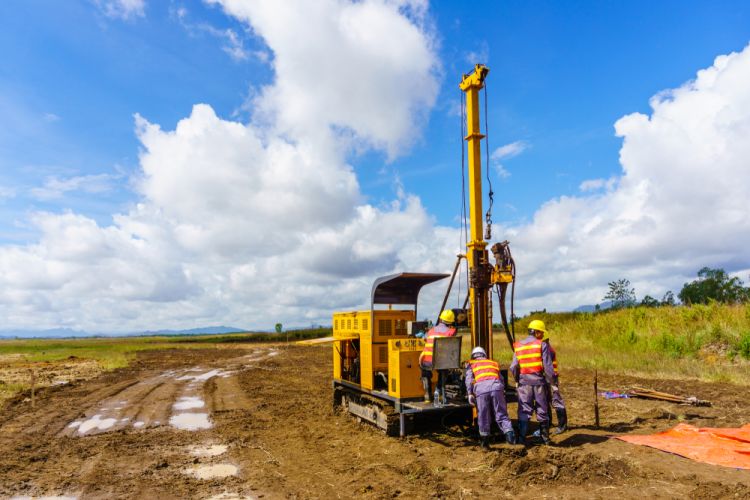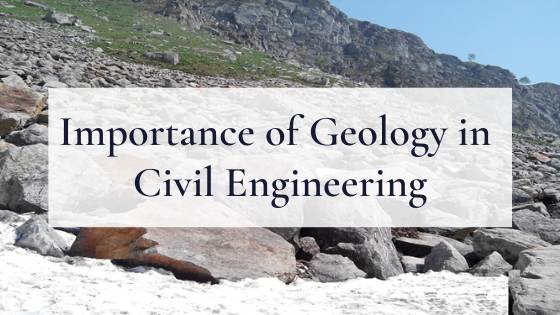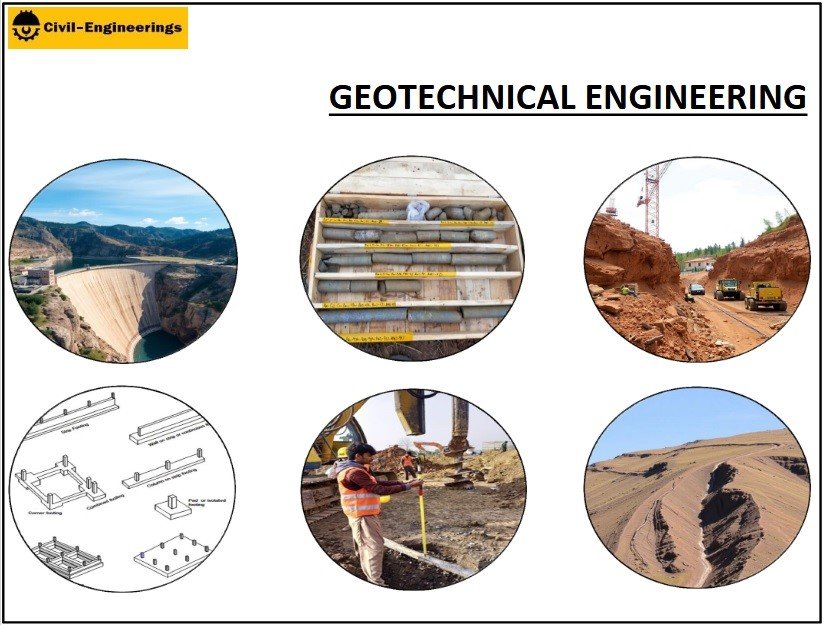Geotechnical Engineering For Construction Projects Things To Know Before You Buy
Table of ContentsOur Geotechnical Engineering For Construction Projects DiariesHow Geotechnical Engineering For Construction Projects can Save You Time, Stress, and Money.Geotechnical Engineering For Construction Projects Can Be Fun For AnyoneFacts About Geotechnical Engineering For Construction Projects RevealedThings about Geotechnical Engineering For Construction ProjectsUnknown Facts About Geotechnical Engineering For Construction ProjectsThe Basic Principles Of Geotechnical Engineering For Construction Projects
and Kovacs, W. (1981 ), An Introduction to Geotechnical Engineering, Prentice-Hall, Inc. Deep Scan Technology (2023 ): Deep Check Technology reveals covert frameworks at the website of Denmark's highest structure. "Geofrost Coring". GEOFROST. Recovered 20 November 2020. Han, Jie (2015 ). Principles and Technique of Ground Enhancement. Wiley. ISBN 9781118421307. RAJU, V. R.Ground Renovation Technologies and Instance Histories. Singapore: Study Publishing Solutions. p. 809. ISBN978-981-08-3124-0. Ground Enhancement Principles And Applications In Asia. Pariseau, William G. (2011 ). Style evaluation in rock technicians. CRC Press. Hegde, A.M. and Palsule P (Geotechnical Engineering for Construction Projects).S. (2020 ), Efficiency of Geosynthetics Reinforced Subgrade Subjected to Repetitive Automobile Plenties: Speculative and Mathematical Researches.
Cengage Learning, Stamford, 666 p. Atkinson, J., 2007. The technicians of dirts and structures. The Observational Method in ground design principles and applications.
The smart Trick of Geotechnical Engineering For Construction Projects That Nobody is Talking About
Laboratory and area screening plays an important duty in this process. By removing examples from the earth's subsurface and applying a collection of tests, geotechnical engineers can anticipate the practices of dirt layers and examine their viability for various building efforts. The significance of geotechnical engineering in civil design can not be overemphasized, attributable to numerous factors: The first step in any type of geotechnical research study entails determining the soil type at the building and construction website.
The foundation acts as the bedrock of any building job. Choosing the suitable foundation kind is a decision that hinges on the extensive analysis given by geotechnical design.

Geotechnical site examination is a vital action in the preparation and implementation of any construction task. It includes the collection and evaluation of data connected to the physical residential properties of soil and rock below a suggested construction website. This info is vital for the layout and building and construction of risk-free, stable, and lasting structures.
About Geotechnical Engineering For Construction Projects
In this blog, we will certainly delve right into the significance of geotechnical website investigation, its numerous components, and how it profits construction jobs. Geotechnical website investigation, likewise called subsurface exploration, includes a series of activities targeted at establishing the soil, rock, and groundwater conditions at a construction site. The main purposes are to identify potential geotechnical risks, examine the design residential properties of subsurface products, and supply referrals for the layout and construction of structures, keeping walls, and other structures.
This might consist of geological maps, airborne photos, previous investigation reports, and historic information. The workdesk research study helps in identifying potential geotechnical issues and planning the succeeding fieldwork. Complying with the desk research study, a site reconnaissance is conducted to aesthetically check the site and its surroundings. This involves observing the topography, water drainage patterns, existing frameworks, greenery, and any indicators of instability or erosion.
Geotechnical Engineering For Construction Projects Can Be Fun For Everyone
Shallow examination pits are excavated to straight observe and example the soil and rock. This technique serves for researching the top layers of the subsurface and recognizing near-surface threats. Non-invasive geophysical approaches, such as seismic refraction, ground-penetrating radar (GPR), and electrical resistivity tomography (ERT), are utilized to map subsurface problems and discover abnormalities.
Dirt and rock samples collected during the field investigation are subjected to laboratory testing to establish their physical and mechanical properties. These examinations give essential data for geotechnical analysis and design.
The primary benefit of geotechnical website investigation is ensuring the safety and stability of frameworks. By recognizing the subsurface problems, designers can make structures and other structural elements that can hold up against pop over to these guys the lots and ecological forces they will undergo. This decreases the danger of negotiation, decrease, and structural failure.
Everything about Geotechnical Engineering For Construction Projects
This ensures effective and secure construction practices. Geotechnical site investigations are often needed by constructing codes and regulations.
This information is very useful for task supervisors, architects, and specialists in establishing practical timetables, budgets, and contingency strategies. Geotechnical Engineering for Construction Projects. Skyscraper in a Coastal AreaIn a seaside city, a high-rise property structure was intended on a site with thought loosened sand deposits and a high water table. A detailed geotechnical investigation, including borehole exploration, CPT, and geophysical surveys, was conducted
Little Known Questions About Geotechnical Engineering For Construction Projects.
Based on these searchings for, the foundation design was modified to consist of deep pile structures prolonging into stable strata, and ground renovation methods, such as vibro-compaction, were executed to minimize liquefaction dangers. This positive approach made certain the security and security of the building while avoiding pricey post-construction remediation. Framework Development on a Sloping TerrainA significant facilities job, involving the construction of a freeway and bridges, was prepared on a hilly surface with steep slopes.

The Leaning Tower of Pisa (Italy), an iconic architectural wonder, is notorious for its unintended tilt from substantial geotechnical issues. The tower's foundation was improperly developed to take care of the soft, unstable soil beneath it, causing irregular settlement and its unique lean. Our globe is populated with excellent infrastructure projectsfrom towering high-rise buildings to stretching bridgesall standing testimony to the advancement of the various building and construction equipment and techniques readily available.
Geotechnical design is a specific area within civil engineering that concentrates on examining the actions of planet materials. This branch digs deep right into the groundinvestigating just how the soil, rock, and groundwater at why not try here a building website can influenceand be affected bythe infrastructure that we erect on and into them. Prior to a solitary block is laid or a concrete foundation poured, geotechnical engineers probe into the earthgathering critical data regarding the site's soil make-up, rock framework, and groundwater levels.
The Facts About Geotechnical Engineering For Construction Projects Revealed

is a tool utilized to evaluate the stability use this link and load-bearing capability of stacks during installation, leveraging the principle of wave breeding. It optimizes building efficiency by providing real-time evaluations, thus ensuring safe and effective pile structures. One of the useful applications of geotechnical design entails making a decision and carrying out the best methods for structure building.
Stack driving represents more than the plain act of placing architectural components right into the ground. On the other hand, it is a very carefully managed process of transferring a structure's load past the much less stable dirt layers better to the surfacedown to the a lot more substantial strata that exist below. When it comes to heap driving, take into consideration just how geotechnical designers adeptly use this strategy to uniformly distribute the framework's weight.
Comments on “Little Known Questions About Geotechnical Engineering For Construction Projects.”